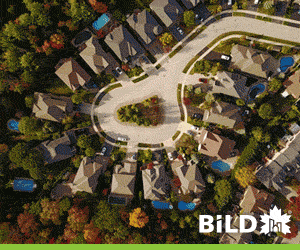
Municipal election 2022
Show your support. Vote for housing.
In the upcoming municipal elections, let’s make sure that housing remains a top priority in your city or town.

Experts, the industry and governments all agree that Ontario’s current housing crisis, centred on the Greater Toronto and Hamilton Area, is firmly rooted in a shortage of new housing being built and the length of time it takes to build new homes.
The provincial government has committed to enable the construction of 1.5 million homes over the next decade. This would be roughly double the current rate of housing starts in the province, and would bring balance to the market, increasing housing supply for residents and improving affordability.
Meeting this objective will require that all levels of government—especially municipal governments—and the industry work closely together to accelerate the building of new homes to increase housing supply. It will also require fresh thinking and bold action as the current systems and processes are falling short of delivering the supply needed.
Working together, we can fix the housing shortage in the GTA.
To support this objective, the Building Industry and Land Development Association (BILD) and the Ontario Home Builders’ Association recently released a five-point plan for consideration by municipalities and the provincial government on how to enable housing supply and affordability.
1. Make homes more affordable by speeding up approval times and eliminating red tape.

Most municipalities in Ontario experience delays in development approvals for building new homes beyond the reasonable regulated timeframes. These delays can last years and add significant costs to the price of a new home. Every year that a municipality delays an approval decision costs home buyers an additional $36,000 for a typical low-rise home and an additional $26,000 for a typical high-rise apartment. Typical approval times across the GTA are measured in years, not months.
2. Add certainty to the cost of building a new home by addressing out-of-control development fees.

Across the GTA, up to 25% of the cost of a new home is composed of fees, taxes and charges imposed by the government. Over half of these fees, taxes and charges is imposed by municipal governments. Municipal levies on new homes have increased by 300%-1000% since 2004. In addition, in some municipalities new policies like inclusionary zoning (IZ) will add up to $60,000 per unit in hidden costs to a new homeowner. This will bring the burden of government-imposed fees and taxes to over 30% of the cost of a new home. All of these fees are passed onto the homebuyer to the benefit of governments. Through these fees and charges, municipalities have amassed large reported surpluses. For example, in the GTA alone, these surpluses are in excess of $5 billion.
3. Make new lands available to build housing.

Home supply and costs are dependent on land availability, and the supply of available lands designated for growth across municipalities is dwindling rapidly. Similarly, the addition of new housing within existing communities is severely restricted by municipal zoning. This prevents the addition of supply and drives up costs for Ontario residents. As a result, land values for serviced lots across the province have increased, and in some cases have tripled or quadrupled, adding hundreds of thousands of dollars to the cost of a new home.
4. Lay the groundwork for future growth.

The supply of housing is highly dependent on critical services and transportation infrastructure. Prolonged delays of infrastructure projects, such as those experienced with the GTA West Corridor (Highway 413) and the Upper York Sewage Solution, delay and threaten the delivery of much-needed housing.
5. Take the politics out of planning.

There is a strong incentive for individual municipal councilors to get behind community opposition to growth and development, because they are elected by existing residents, not future residents. In addition, various designations and forums are open to misuse as a means to slow or block development. This can lead to local decisions that limit the ability to add housing and commercial spaces, as was recognized by Ontario’s Housing Affordability Task Force in its recommendations.
What can you do?
Your opinion matters on election day. Help make sure housing remains a top priority in your community:
- Talk to your candidates for municipal office.
- Tell them that adding housing supply in your town or city matters.
- On municipal election day, support councilors who support housing.


